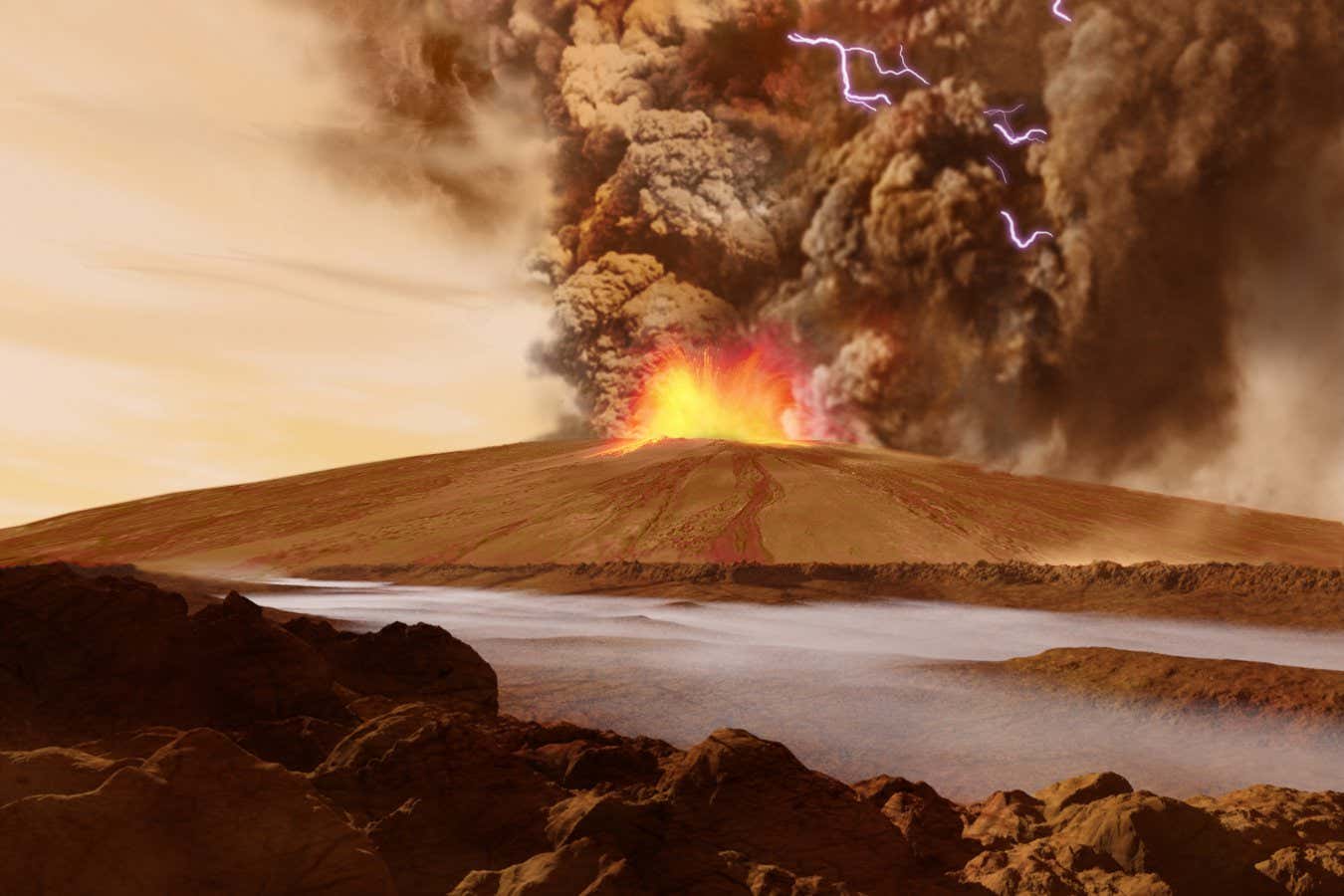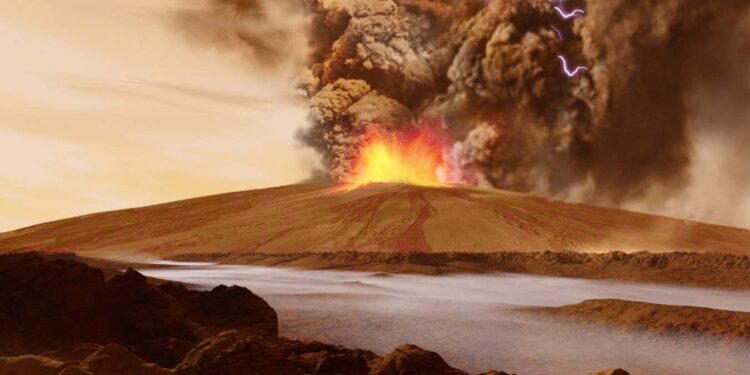
Ancient volcanic eruptions on Mars may have deposited ice at the planet’s equator
RON MILLER/SCIENCE PHOTO LIBRARY
The warmest parts of Mars host a strange, thick layer of ice beneath the surface, and we may have finally figured out how it got there. It might have been shifted from the inside of the planet by extraordinary volcanic eruptions billions of years ago – and all that water could be crucial for future crewed missions.
We’ve long known that Mars is rich in ice, but most of it seemed to be in the ice caps that top both of the poles. Over the past several years, though, radar evidence from orbiters around the Red Planet has mounted, indicating there is also ice in its equatorial regions. “There’s this frozen layer at the equator – that’s odd because it’s the hottest part of the planet,” says Saira Hamid at Arizona State University. At midday near the equator, it can reach about 20°C (68°F).
Hamid and her colleagues ran a series of simulations of volcanic eruptions on Mars and found that over the course of millions of years, a series of explosive eruptions could have blasted water from the interior up into the atmosphere – back when Mars had a far denser one, billions of years ago. There, it would freeze and snow down to form the ice layers we see now. “It’s truly a story of fire and ice,” says Hamid.
These eruptions would have been, in some ways, unlike anything we see on Earth. Mars’s lower gravity means that plumes of volcanic dust, water and sulphur could have reached a height of 65 kilometres above the ground – or potentially all the way to space, depending on how thick the atmosphere was when the eruptions occurred.
Once the material snowed back down, the water would compact into dirty ice, covered in an insulating sheet of volcanic ash. This dust would keep the ice from sublimating away into space, helping to preserve it up until the present day.
“The whole possibility of this type of an ice-rich deposit has been a bit of a head-scratcher for a lot of people,” says Tom Watters at the Smithsonian Institution in Washington DC. Particularly confusing is one of the largest volcanic formations near Mars’s equator, called the Medusa Fossae Formation, mostly because of its sheer size: “If you melted all the water that we think we see in the Medusa Fossae formation, you would fill the Great Lakes. It’s a lot of water.”
Another possible explanation that researchers had cooked up for all that ice is that Mars’s obliquity – its tilt with respect to the sun – may have changed dramatically over the course of its history, so the equatorial regions may have once been the poles. “But with these volcanic eruptions, you don’t need to transport the ice from other areas of the planet, you don’t need changes in obliquity,” says Hamid. “It’s just simpler.”
The equatorial region is also the best place for missions to Mars to land, because the paltry atmosphere is thickest there, which helps slow down landers on their approach to the ground. A source of water there could be incredibly useful for eventual human missions – perhaps not the very first ones, but later landings could take advantage of the ice.
“Those initial trips, you want to bring enough water in case we’re completely wrong and there’s some bizarre material that we’re seeing in the radar,” says Watters. “I wouldn’t go without enough water and just bring a shovel and assume you’re going to hit water. Bring a shovel, but bring enough water, too.”
Topics:
Source link : https://www.newscientist.com/article/2499717-martian-volcanoes-may-have-transported-ice-to-the-planets-equator/?utm_campaign=RSS%7CNSNS&utm_source=NSNS&utm_medium=RSS&utm_content=home
Author :
Publish date : 2025-10-14 16:00:00
Copyright for syndicated content belongs to the linked Source.











